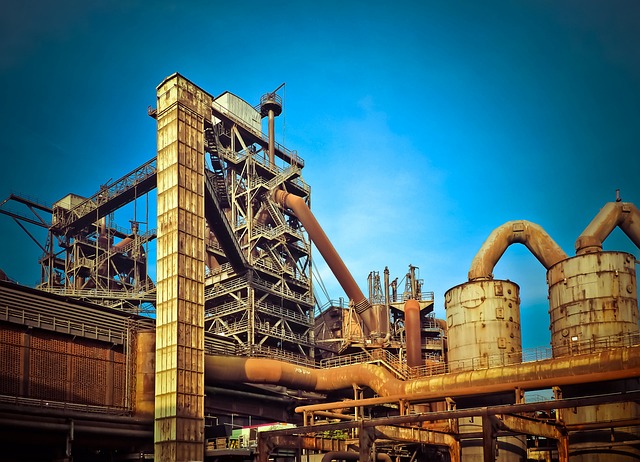Optimizing production line workflow is a paramount concern for businesses across various industries. It is a pivotal strategy for increasing efficiency, reducing costs and ultimately enhancing productivity. A streamlined production line can lead to improved product quality, decreased lead times and greater overall competitiveness in the market.
Each of these nine steps plays a crucial role in the process, from analyzing the existing workflow to implementing automation and ensuring quality control. These strategies can be applied across various manufacturing contexts, helping businesses of all sizes achieve their production goals and stay competitive in an ever-evolving marketplace.
Process Mapping
Process mapping is the foundational step in optimizing a production line workflow. It involves creating a detailed visual representation of every step in your manufacturing process, from raw material intake to finished product output. Through this comprehensive overview, you can identify bottlenecks, redundancies and areas for potential improvement. For example, in manufacturing heavy equipment, a vital component of the process is the movement of large, heavy materials. The process map can help you pinpoint where the crane, such as an overhead material handling system, is most frequently employed and whether it is operating efficiently.
Data Collection
Collecting data is instrumental in understanding how your production line functions. This data should encompass various aspects, such as cycle times, equipment downtime, resource utilization, and error rates. Gathering this data enables you to make data-driven decisions. For instance, you can identify trends or recurring issues that may suggest underutilization or overloading of the material handling system, allowing for better scheduling and maintenance.
Identify Constraints
Constraints are the critical points in your production line where output is limited or slowed down. These constraints can be physical or procedural. In the case of a heavy equipment manufacturing line, a physical constraint might be the material handling system’s capacity to lift and move heavy components. Identifying these constraints is essential for focusing your optimization efforts on the areas where they can have the most significant impact.
Process Redesign
Once you have identified constraints in your production line, the subsequent step involves a careful and strategic process redesign to eliminate these bottlenecks. First, you may need to reallocate resources within your manufacturing environment. This could include adjusting the number of workers assigned to specific tasks or changing their roles to ensure a more balanced and efficient workflow. Additionally, the sequence of operations may require modification. Optimizing the order in which workers perform various tasks can minimize downtime and reduce unnecessary material handling. For instance, by rearranging the assembly sequence, you may find that specific components are ready at the right time, eliminating delays caused by waiting for materials to arrive.Furthermore, consider upgrading specific equipment or machinery within your production line. This might include incorporating advanced technologies to enhance efficiency or the implementation of state-of-the-art sensors for more precise positioning, automation for smoother operation, and energy-efficient components to reduce operating costs.
Workstation Layout Optimization
Efficient workstation layout is critical to a streamlined workflow. In industries where large or heavy components are frequently moved, the use of an overhead bridge crane can be invaluable. You should arrange workstations to minimize unnecessary material handling and facilitate a smooth flow of materials and products. The layout should enable easy access to the crane’s loading and unloading points, minimizing delays or obstructions in the workflow and ensuring materials move efficiently to their destination.
Automation Integration
The integration of automation technology is a pivotal step in optimizing production line workflow. Automating repetitive and time-consuming tasks can reduce the need for manual labor, improve precision and enhance overall productivity. Automation can be applied to control and monitor material handling systems, ensuring that movements are precise and coordinated with other processes. Automation can further be expanded to include robotic arms, conveyors, and sensors that work in tandem to ensure seamless material handling and processing.
Employee Training
As you introduce changes to the production line, investing in employee training is essential. Your workforce must be well-versed in the new processes, equipment and safety guidelines. Training ensures employees can adapt to and operate efficiently within the optimized workflow. For instance, employees can be trained on the safe operation of material handling systems, load capacity limitations and emergency protocols. Regular and thorough training programs empower your employees to contribute to the success of the optimized production line and enhance overall workplace safety.
Continuous Monitoring and Improvement
Implementing a system for continuous monitoring and improvement is crucial for maintaining and enhancing the efficiency of your production line. Regularly collecting data, conducting performance evaluations and obtaining employee feedback allows you to identify emerging issues or areas for further optimization. Continuous monitoring might involve tracking performance metrics, such as lift and travel speeds and inspecting components for wear and tear in the context of the material handling system. Schedule regular maintenance based on this data, ensuring efficient operations.
Quality Control
Quality control is a fundamental aspect of an optimized production line. Implement a robust quality control system to ensure the improved workflow meets the desired product quality standards. Integrate frequent checks, inspections and testing into the process. For example, quality checks ensure that material handling does not cause damage or defects and that product quality is maintained or improved during manufacturing.
Conclusion
Optimizing production line workflow is an ongoing endeavor that demands meticulous planning, data-driven decision-making, and a commitment to continual improvement. By meticulously mapping processes, identifying constraints, and strategically redesigning the workflow, businesses can streamline operations, reduce inefficiencies, and enhance productivity. Employee training, automation integration, continuous monitoring, and a robust quality control system provide a seamless and efficient production line. These collective efforts result in a competitive advantage, improved product quality, and a more agile response to the dynamic demands of the market. Any manufacturing operation’s success hinges on optimizing its production line, ultimately driving growth, reducing costs, and ensuring long-term sustainability.
